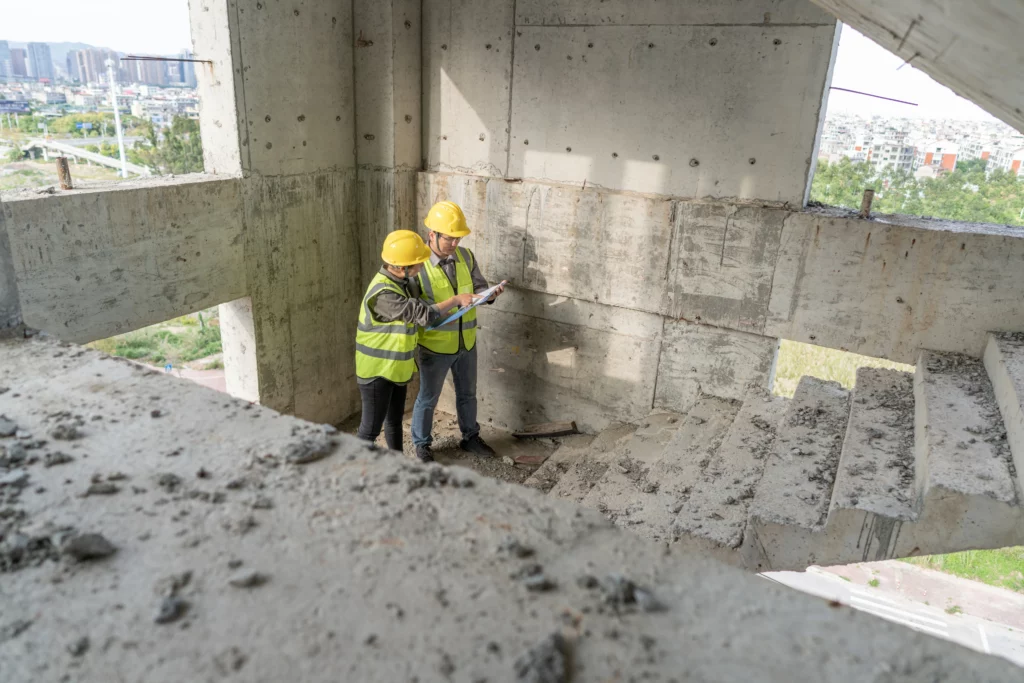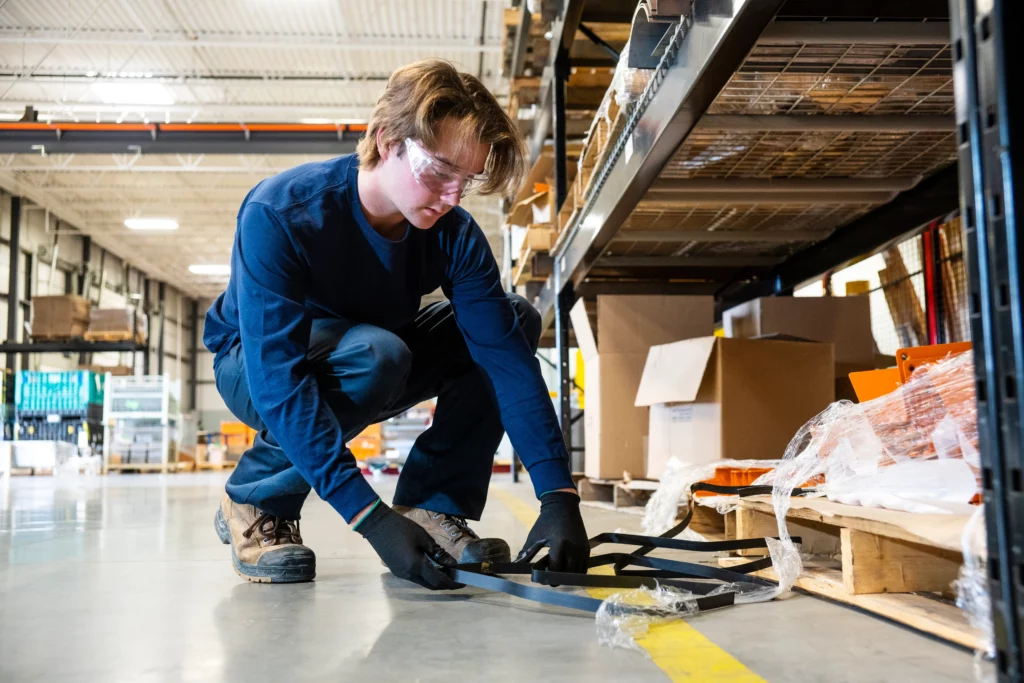The importance of driving a culture of health and safety within your workplace cannot be underestimated. Your workforce are engaged in safety, your proactively minimising risk and you’re complying with regulations. But if you need to make some changes to help cement a positive safety culture, where do you start?
In this blog we will define what a positive safety culture is and help you identify the signs of a poor safety culture. We will also provide advice on how you can create a positive and long lasting safety culture in your organisation. Sound good? Then let’s begin.
What is a positive safety culture?
A positive or good safety culture is a way of doing things that’s shared, taught, or copied. Everyone in a particular culture tends to do things in a similar way, which they consider to be the norm. So, an organisation’s safety culture consists of its shared working practices, its tendency to accept or tolerate risk, how it controls hazards and how it deals with accidents and near misses.
Safety culture can also be described as a combination of how people feel about safety (the safety climate), individual actions, and the policies and procedures the organisation has in place. In accordance with the Institution of Occupational Safety and Health (IOSH), a positive safety culture has three key elements:
- Working practices and rules to effectively control hazards
- A positive attitude towards risk management and compliance with control processes
- The capacity to learn from accidents, near misses and safety performance indicators and promote continuous improvement
The challenge for any organisation is how to foster and maintain a positive health and safety culture. It’s hard to change the attitudes and beliefs of colleagues by direct persuasion. But by acting safely and leading by example, people will start to think “safety first”. It’s important to involve your people in safety processes to give them that same sense of ownership.
What is a poor safety culture?
If you and your organisation are going to create a positive safety culture, you need to understand the signs of a poor safety culture. A poor health and safety culture can lead to injuries, accidents or even fatalities, perhaps due to poor training, communication or under reporting.
It promotes an atmosphere where non-compliance with safe working practices is acceptable and doesn’t help the organisation take effective action to address health and safety problems.
Often, organisations with a poor safety culture have the same underlying attitude to all processes and procedures. This can result in poor product quality and financial control, as well as poor health and safety. A poor health and safety culture can be identified by:
- A lack of safety leadership/commitment from the top down, with no safety ownership or responsibility for health and safety at board level
- A board of directors that are more concerned with profit over safety
- Poor incident/accident reporting:
- Accidents in your workplace happen but aren’t reported
- There’s no formal procedure for accident/incident investigation to prevent them from happening again in the future
- Blame culture in an organisation that tends to blame individuals for accidents/incidents. This creates a culture of fear, mistrust, and a reluctance to report accidents or near misses
- A lack of communication and consultation where employees aren’t aware of policies and the safety expectations set out by the organisation
- Minimal or no training on health and safety topics. This means employees do not have the necessary skills required to carry out their roles safely
- Minimal or no budget for the health and safety department to improve reactive and proactive processes
If you are reading this and recognise any of these issues in your organisation, it does indicate that you have a poor safety culture. But don’t worry, it’s not too late!
8 steps to creating a positive safety culture
As we outline above, creating a positive safety culture not only safeguards your employees, supply chain and potentially the general public from harm, it also contributes to the long term success and sustainability of your organisation. Creating and maintaining a workplace environment where employees prioritise and actively participate in safety initiatives will reduce accidents in your organisation. So, where do you start? Here are 8 steps to creating a positive safety culture.
- Lead by example: Your leaders and managers should demonstrate their commitment to safety by following safe work practices, using personal protective equipment, and addressing any safety concerns promptly
- Hold your leaders accountable: They must be held accountable to ensure a safe working environment and proactively promote safe behaviours.
- Provide safety training: All your people need regular training on safe work practices, hazard identification, and risk assessments. This helps them understand the importance of safety and how to identify and address potential hazards
- Get your people onboard: Involve them in the development and implementation of safety policies and procedures. This helps ensure that policies and procedures are practical, effective and easy to understand and follow
- Encouraging reporting: Employees should report any safety concerns, incidents, or near-misses. This helps identify potential hazards and allows for corrective action to be taken before an incident occurs. A user-friendly mobile app, such as Notify’s Incident Management mobile app, can allow employees to report safety events from anywhere, for free!
- Investigate incidents: Identify the root cause and ensure the findings are reported back to the reporter and employees for continuous learning.
- Acknowledge safe behaviour: Recognise and reward employees for safe behaviour, such as following safe work practices, reporting hazards near-misses or positive observations, and participating in safety training.
- Continuously monitor and improve: Use key performance indicators—such as the number of incidents reported, the number of safety observations and lost time injuries—to inform the efficacy of your safety strategy, performance and culture. You can use safety dashboards such as those provided by Notify to identify improvement opportunities by location or department. Also consider qualitative information from safety culture surveys to make any improvements. Ensure any outcomes are communicated across your organisation.
What is an example of a good safety culture?
Now that you are equipped with the knowledge of how to create a positive safety culture, you know need to know how you can measure it, or what the key indicators are. Naturally you can use the information above to ensure there are no signs of a poor culture creeping back in, but let us provide you with an example of a good safety culture, to give you context.
Organisation A is currently reporting 20 near-misses a year and 3 RIDDOR reportable incidents. Organisation B, who is the same size and in the same industry as Organisation A, reports 500 near-misses a year and 10 RIDDOR reportable incidents.
Which one has the best safety culture?
Of course, the answer is Organisation B. If you have engaged employees who are reporting hazards, near-misses and positive observations on a frequent basis, your organisation is learning more and more about potentially unsafe events. With this information you can proactively reduce the risk in your organisation. Trust us, if you have a positive safety culture, you will see the number of accidents decrease as your near miss reports increase.
Final thoughts
An organisation can develop standard safe working practices that comply with the law and best practice. It can also create a positive attitude to compliance by making sure that board members and senior managers lead from the front. For these two elements to work effectively, the organisation needs to learn from what’s happening in the workplace.
Good information is essential for a positive safety culture. For the information to flow, the workforce needs to be willing to participate and be prepared to report their mistakes, near misses and accidents. Only through awareness of, and analysing accidents and near misses, is it possible to develop suitable improvements to safe working practices and create a positive health and safety culture.
To learn more about how to create a positive safety culture, download our free eBook: Driving a positive safety culture, today.



